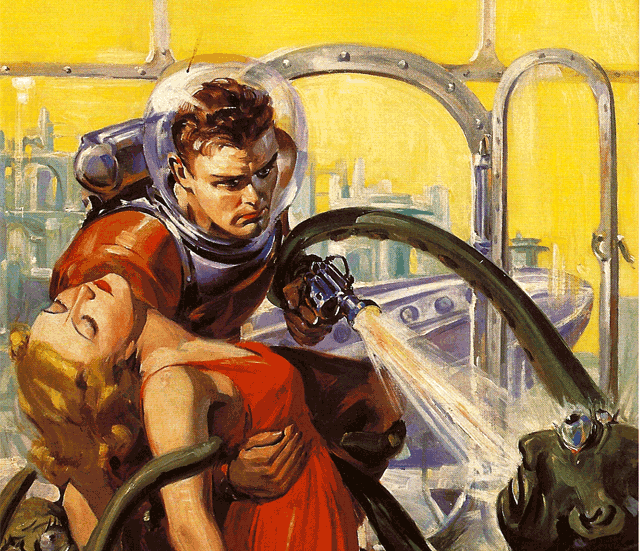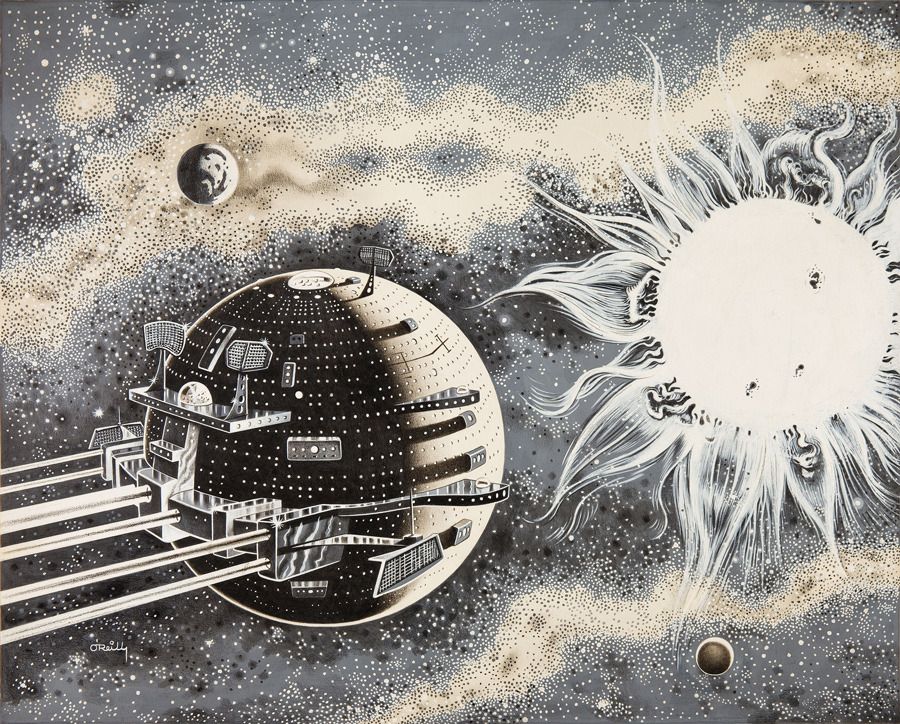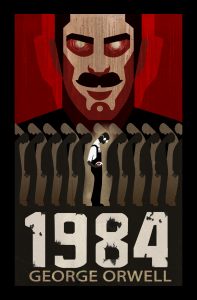
PHOTO: best-sci-fi-books.com
Last time on the History of Science Fiction, we covered the late 19th century and early 20th century science fiction works, and the effect of the Literary Realism movement on the genre. We covered works like Edgar Allen Poe’s The Narrative of Arthur Gordon Pym of Nantucket, and Will Harben’s “Land of the Changing Sun”.
This time, we’re moving on to the Early 20th century, to pulp fiction and the early modernist writers whose creations were influenced by the turbulent world around them and whose writing would set the precedent and pave the way for the Golden Age of Science Fiction.
The Rise of Pulp Fiction & Pulp Magazine
In 1826, Hugo Gernsback founded the first magazine devoted to science fiction stories, called Amazing Stories. Much of what was published in this magazine has been referred to as “gadget fiction”, mostly about new inventions.
It was with the publishing of magazines like Amazing Stories, Astounding Stories, Weird Tales, and Wonder Stories, that the science fiction fandom was born.
In these magazines, science fiction began to take its place in popular culture alongside murder mysteries, horror, fantasy, and other commonly published genres.
The first science fiction films began to be made in this period as well. In 1927, Fritz Lang produced his movie Metropolis, where audiences got their first glimpse of a cinematic humanoid robot. It was an extremely successful film, and became the guiding aesthetic for pulp science fiction for years to come.
Post World War I
As the world expanded and changed, writers began to try and explain their world through the lense of science fiction. Works about time travel became very popular. Modernist writers like T.S. Eliot, James Joyce, and Virginia Woolf wrote stories about distorting time.
Alienation became a popular theme. Modernist writers often portrayed common cultural values as strange or unusual in alien cultures, giving audiences, for the first time, an outside view on what their accepted norm was. The Modernist SciFi writer’s goal was to get the reader to question everything, and it worked.
Arguably the most famous and highly regarded Modernist science fiction work was written by George Orwell. His novel, 1984, is, perhaps, the most admired and looked-to literary dystopia in history. Drawing from a world wracked with fear of totalitarian and Communist regimes, he wrote about a society completely dominated by governmental information control. Its impact on the modern world has been extensive, and other writers have continued Orwell’s conversation about dystopia vs. utopia in works like The Dispossessed and Fahrenheit 451.
Impact on the 20th Century

PHOTO: 50watts.com
Science fiction had a profound effect on the European public as a whole. One famous incident is the story of The Mercury Theatre on the Air producing a radio version of War on the Worlds. It drove crowds into a panic because many actually believed the program was a newscast!
During World War II, American generals and scientists drew on the ideas of fiction to supplement the war in reality.
Stories about aliens and invaders from outer space began to trickle into the psyches of everyday people, and, when the story circulated about a UFO crash landing on Roswell, New Mexico, in 1947, many people believed it. Conspiracy theories were formed. Science fiction, for the first time in history, became folklore.
Next time, we’ll cover the period of science fiction in the 1940s and 1950s commonly referred to as the “Golden Age” of science fiction. We’ll be talking about famous works such as the Astounding Magazine, Invasion of the Body Snatchers, Galaxy, and Forbidden Planet.



